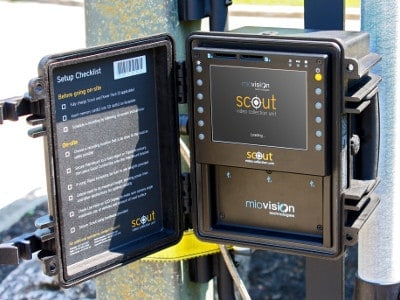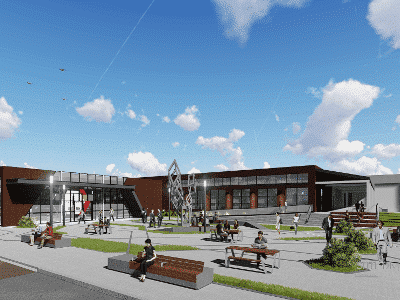
 Kitchener-based traffic system technology platform developer Miovision has partnered with two Waterloo start-ups, Brisk Synergies and Ecopia Technologies, who’ve got roots in Waterloo’s Accelerator Centre, from which Miovision is also a graduate, with the objective of helping cities to create real-time visualizations of their transportation networks.
Kitchener-based traffic system technology platform developer Miovision has partnered with two Waterloo start-ups, Brisk Synergies and Ecopia Technologies, who’ve got roots in Waterloo’s Accelerator Centre, from which Miovision is also a graduate, with the objective of helping cities to create real-time visualizations of their transportation networks.
“Urban planners and transportation leaders need living, breathing visualizations of their cities to be able to plan for the future and adjust for short-term problems,” said Miovision CEO and co-founder Kurtis McBride. “This new partnership combines Miovision’s devices, Ecopia’s urban visualization technology and Brisk’s data analytics into a solution for any city that wants to have a real-time image of itself.”
Miovision’s Spectrum product monitors traffic flow from traffic cabinets, where the device is plugged in.
Spectrum can identify individual vehicles, which are then anonymized, for tracking. That information is fed to Brisk’s analytics engine to create a real-time flow visualization. Ecopia will create a map based on satellite imagery that a city can use to create a dynamic map of all traffic.
“This is truly a case where the sum is greater than the individual parts,” said Brisk Synergies CEO Charles Chung. “When we started to see the big picture of what we could accomplish together, it made sense to jump in and make it reality. The fact that all three of us are based in the same area and went through the Accelerator Centre makes it that much sweeter.”
With the idea of “smart cities” on the horizon, Gartner is predicting that projects like this collaboration will be part of a $151 billion transportation IT market by 2018.
Aside from simply making the overall experience of urban driving more bearable, these initiatives can also save municipalities money by optimizing the process of determining the most effective use of infrastructure dollars, which now largely rests on human observation and city planners for where and when to dig up and replace roads.
“It’s one thing to talk about how our different technologies could work together in theory,” said Ecopia CEO and co-founder Yuanming Shu. “It’s quite another to create it for a real city, knowing that what we build will provide a useful tool for transportation planners and ultimately improve the lives of residents.”
As it stands, cities often do create maps for infrastructure projects which are thrown out after they’ve outlived their usefulness, not to mention that once they’re drawn up, they are not dynamic or alive, and so become obsolete very quickly.
With the advent of smart cities, though, city officials are looking for the best ways to harness actionable data for modeling the decision making process, and also to use sensors, cameras and satellites to help shape the flow of that process.
Miovision, who raised a $30 million Series B round of funding in February, keeps an eye on its alma mater for up-and-coming talent.
“Miovision always looks for innovative partners to complement our technology, and we’re especially proud to collaborate with other UW alums and teams who have gone through the Accelerator Centre,” McBride said. “This partnership helps us promote our vision to use intelligent transportation systems as a platform for new services that make life better.”
The trio is currently working on several pilot projects for its collaboration throughout North America.
Leave a Reply
You must be logged in to post a comment.







 Share
Share Tweet
Tweet Share
Share




Comment